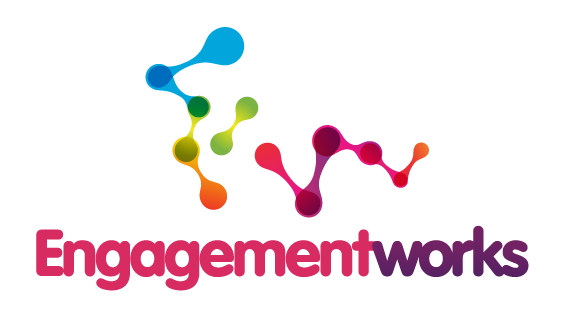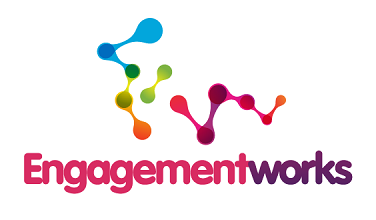At Engagementworks our approach to community engagement is based on some simple principles:
We believe that successful community engagement isn’t rocket science. Consequently we are sceptical of organisations that over-complicate what we believe is largely straightforward, particularly if the organisation that is undertaking the engagement has a good mind-set about managing projects and the relationships it has with communities and stakeholders.
For many years some organisations’ approach to community engagement has been to reference an engagement spectrum, usually one promulgated by IAP2 or the OECD. There is a number of these, usually quite similar in their purpose. However, as we have noted in a previous blog, the language used in these models can be confusing. Confusion shouldn’t be the core tenet of any measures to connect with communities or stakeholders, which is why we developed our own spectrum to describe the nature of engagement relationships that are possible. An engagement spectrum needs to reflect the ways communities see engagement, rather than the complicated way some organisations define it.
Recently we were encouraged to learn that IAP2 Australasia was looking to review the engagement spectrum that it had been promoting for many years, as we believed that this was confusing in a number of areas. IAP2 Australasia has now replaced its spectrum with what it calls a “community engagement model”. While we understand what this new model is trying to explain, we don’t believe that this is particularly clear or helpful to engagement practitioners or the communities and stakeholders with whom they seek to engage. It is an example of simple processes made to look complicated.
Re-using others’ good ideas makes a lot of sense. But cutting and pasting spectrums should mean that your organisation understands and embraces the mind-set and principles that underpins that content and also reflects what the community understands engagement to mean.
From a stakeholder perspective there are really only three types of engagement:
The best decisions involve the participation of as many of the affected community as possible – the wisdom of crowds.
So rather than being seduced by the power of Ctrl-C Ctrl-P, here are some steps to consider for a straightforward approach to building a community engagement strategy – either at an organisational level or for a specific project:
- Acknowledging the power of the community to help solve difficult problems
- Engaging as early as possible to get agreement on the problem and identify possible solutions
- Doing engagement because you WANT to, rather than because you HAVE to
- Aiming to make engagement processes as wide-ranging as possible in terms of affected or interested people – having a commitment to accessing “hard-to-reach” groups
- Striving to build trust and respect by having consistent, robust processes
- Underpinning engagement activities with open communication and feedback, so interested people know what’s happening
- Making engagement easy and on communities’ terms, rather than on the organisation’s terms
- Clearly identifying who is responsible for delivering different aspects of the agreed solution – usually the organisation, but sometimes in partnership with affected communities.
We believe that successful community engagement isn’t rocket science. Consequently we are sceptical of organisations that over-complicate what we believe is largely straightforward, particularly if the organisation that is undertaking the engagement has a good mind-set about managing projects and the relationships it has with communities and stakeholders.
For many years some organisations’ approach to community engagement has been to reference an engagement spectrum, usually one promulgated by IAP2 or the OECD. There is a number of these, usually quite similar in their purpose. However, as we have noted in a previous blog, the language used in these models can be confusing. Confusion shouldn’t be the core tenet of any measures to connect with communities or stakeholders, which is why we developed our own spectrum to describe the nature of engagement relationships that are possible. An engagement spectrum needs to reflect the ways communities see engagement, rather than the complicated way some organisations define it.
Recently we were encouraged to learn that IAP2 Australasia was looking to review the engagement spectrum that it had been promoting for many years, as we believed that this was confusing in a number of areas. IAP2 Australasia has now replaced its spectrum with what it calls a “community engagement model”. While we understand what this new model is trying to explain, we don’t believe that this is particularly clear or helpful to engagement practitioners or the communities and stakeholders with whom they seek to engage. It is an example of simple processes made to look complicated.
Re-using others’ good ideas makes a lot of sense. But cutting and pasting spectrums should mean that your organisation understands and embraces the mind-set and principles that underpins that content and also reflects what the community understands engagement to mean.
From a stakeholder perspective there are really only three types of engagement:
- The organisation makes the decision and informs the affected communities
- The affected community makes the decision, which is ratified by the organisation
- The organisation and the community work together towards a shared decision.
The best decisions involve the participation of as many of the affected community as possible – the wisdom of crowds.
So rather than being seduced by the power of Ctrl-C Ctrl-P, here are some steps to consider for a straightforward approach to building a community engagement strategy – either at an organisational level or for a specific project:
- What is the issue or problem? Define the problem from the organisation’s perspective.
- Who is impacted by or impacts on this problem?
- Are these impacts significant to the affected communities? If the problem is defined as significant, then involve these stakeholders in defining the problem.
- Having done that, then engage the community on developing options, then deciding on a preferred option.
- Get community feedback on the preferred option.
- Finalise and make the decision.
- Let communities and stakeholders know what the decision is and also how what you learned from their involvement shaped that decision.
- Outline the key project stages and what contributions may be needed from communities at each of those.


 RSS Feed
RSS Feed
